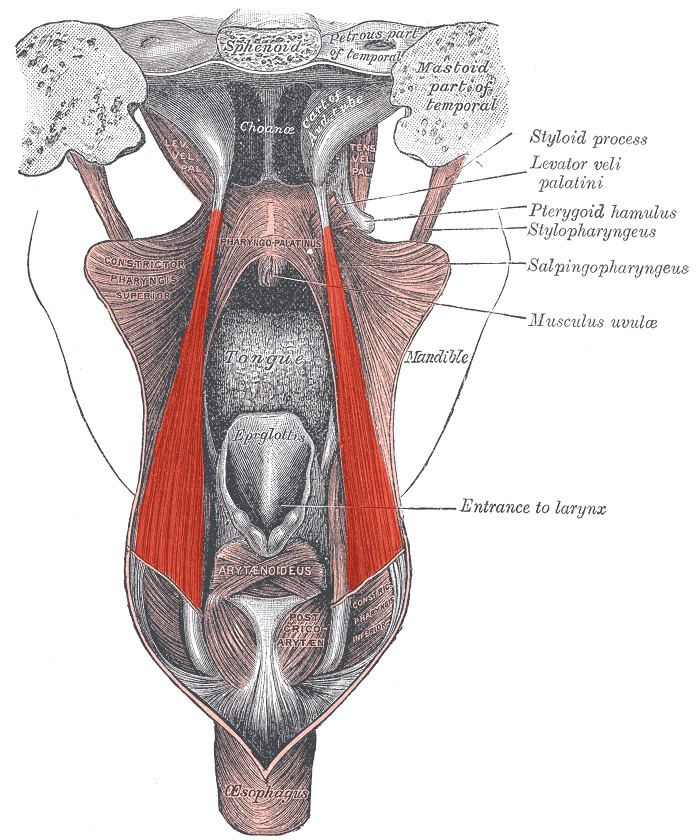Nerve Vagus nerve | Dorlands
/Elsevier m_22/12550620 | |
 | ||
Origin Lower part of the cartilage of the auditory tube Insertion Fibers pass downward and blend with the palatopharyngeus muscle to the upper border thyroid cartilage, blending with constrictor fibers Actions Assists in elevating the pharynx, pulls on torus tubarius to pressure equalize middle ear Latin Musculus salpingopharyngeus | ||
The salpingopharyngeus muscle arises from the superior border of the medial cartilage of the pharyngotympanic tube (Eustachian tube), in the nasal cavity, making the posterior welt of the torus tubarius; it passes downward and blends with the posterior fasciculus of the palatopharyngeus muscle.
The salpingopharyngeus is known to raise the pharynx and larynx during deglutition (swallowing) and laterally draws the pharyngeal walls up. In addition, it opens the pharyngeal orifice of the pharyngotympanic tube during swallowing. This allows for the equalization of pressure between the auditory canal and the pharynx. As the salpingopharyngeus is used to open the eustachian tubes to equalize pressure in the inner ear, the muscle can easily be stimulated by swallowing.
The salpingopharyngeus is innervated by the vagus nerve via the pharyngeal plexus.
